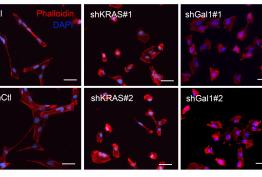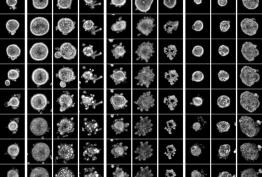- A collaborative research work patents a gene therapy procedure based on liposomal nanoparticles, successfully tested in rodents, capable of delivering therapeutic oligonucleotides directly to the brain.
- It opens a new path towards new gene therapy platforms for the advanced treatment of neurodegenerative and neuropsychiatric pathologies involving inflammation.
A new-patented technology with lipid nanoparticles could address the treatment of brain pathologies related to inflammatory or neurodegenerative processes, as reported in a collaborative work of research groups at the Complutense University of Madrid, Hospital 12 de Octubre, CSIC and IDIBAPS and the CIBER of Mental Health (CIBERSAM), which has been published in Frontiers in Molecular Biosciences.
Antisense oligonucleotides (ASOs) are powerful gene therapy tools in development to address these pathologies, but there are limitations in their use. The main challenges are to avoid their degradation in peripheral tissues, such as blood, and to facilitate access to the brain in appropriate quantities to control gene expression in target cells.
For this purpose, the research team has designed highly compacted lipid nanoparticles that serve as a vehicle for the administration of antisense DNA oligonucleotides; the new nano-pharmacological platform has been validated in rodents.
According to Borja García-Bueno, researcher at CIBERSAM and the UCM School of Medicine and co-director of this study, "these nanoformulations (ASO@LNP) are capable of inhibiting the constitutive expression of genes related to the inflammatory response specifically in a reduced population of macrophages residing in the brain barriers, specifically in the perivascular and meningeal spaces, known as border-associated macrophages or BAMs". In fact, "we have successfully managed to inhibit the PGDS gene associated with inflammatory pathways selectively in these cells using this technology," adds Analia Bortolozzi, CSIC researcher, leading one of the CIBERSAM groups.
Due to their strategic location, BAMs are regulators of the function and structure of the blood-brain barrier in pathophysiological conditions related to neuroinflammation, recognizing molecules to be phagocytosed through the mannose receptor. Therefore, to facilitate the selective phagocytosis of these liposomes by these regulatory cells in areas where neuroinflammation occurs, researchers have included a derivative of the monosaccharide mannose in the lipid structure of ASO@LNPs.
This functional component is located in the liposomal corona, favoring interaction with the mannose receptor presented on the plasma membrane of macrophages. Likewise, the optimized structure of the liposomes obtained by this procedure confers favorable physicochemical characteristics for the protected storage and programmed release of the ASOs compacted inside them.
Francisco Monroy, researcher at the Faculty of Chemistry of the UCM and director of the Translational Biophysics Unit at the Hospital 12 de Octubre, also co-director of the study, considers that "the results obtained in this multicenter collaboration open a new path towards new gene therapy platforms for the advanced treatment of neurodegenerative and neuropsychiatric pathologies in which neuroinflammation plays an important physiopathological role, using gene therapy nanovectors such as those we have designed".
Reference article:
Lipid nanoparticles for antisense oligonucleotide gene interference into brain border-associated macrophages
Macarena Calero, Lara H. Moleiro, Aline Sayd, Yeray Dorca, Lluis Miquel-Rio, Verónica Paz, Javier Robledo-Montaña, Eduardo Enciso, Fernando Acción, Diego Herráez-Aguilar, Thomas Hellweg, Luis Sánchez, Analía Bortolozzi, Juan C. Leza, Borja García-Bueno and Francisco Monroy. Front. Mol. Biosci. 9:887678. doi: 10.3389/fmolb.2022.887678
https://www.frontiersin.org/articles/10.3389/fmolb.2022.887678/full







